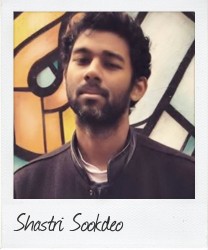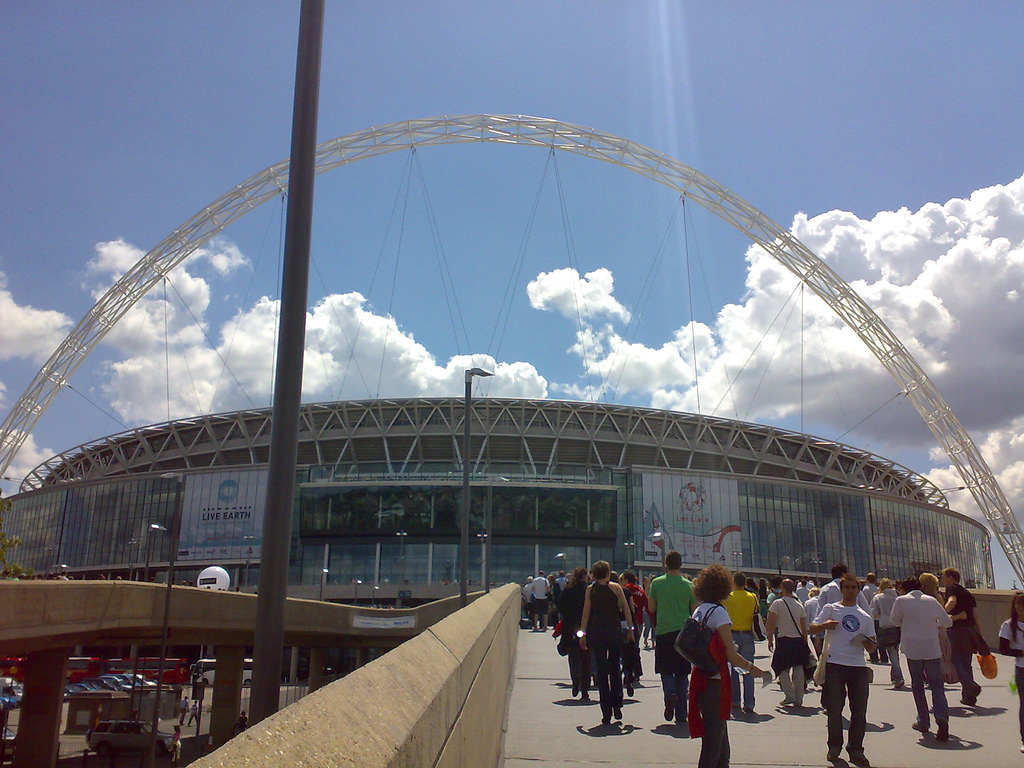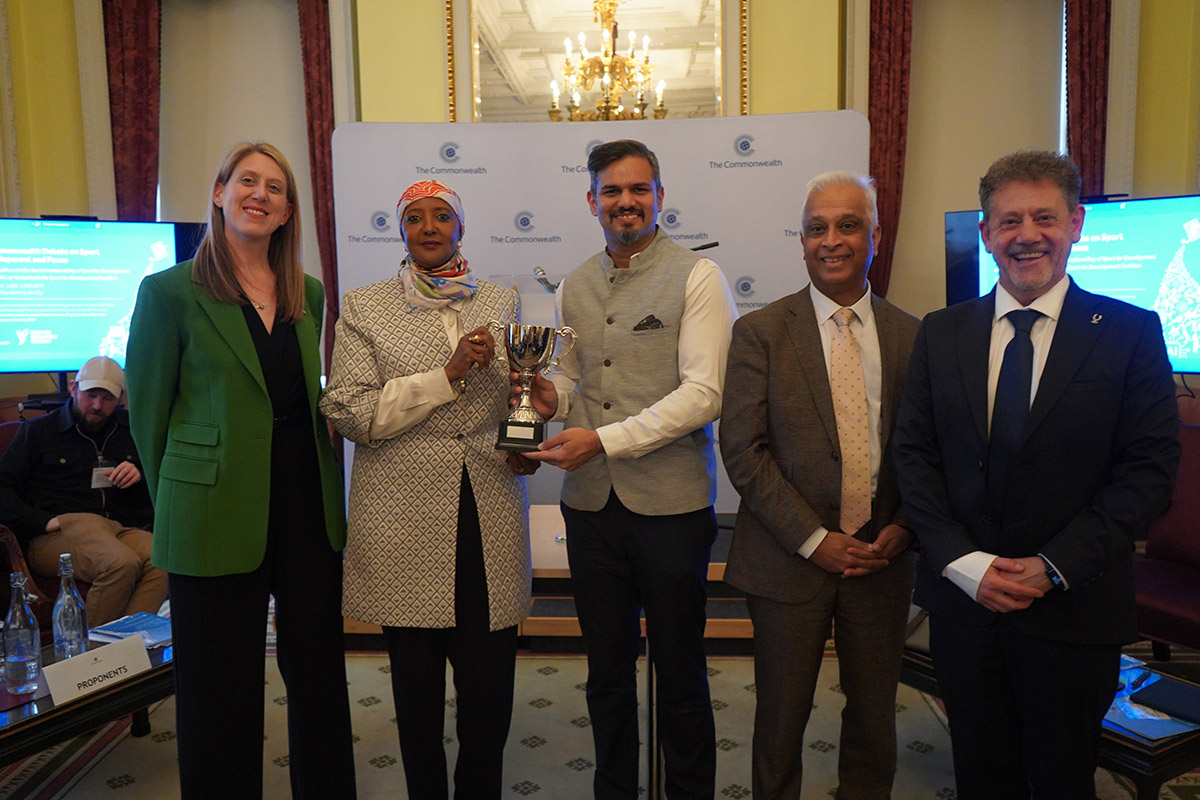“Wembley is a community as well as a stadium”
November 16th, 2016 To many, Wembly means a sports stadium used for the highest level of competition. But Shastri Sookdeo, 27, a Correspondent from Trinidad now living in Amsterdam, learned it is also a vibrant and diverse community, rich in food choices and cultural co-existence.
To many, Wembly means a sports stadium used for the highest level of competition. But Shastri Sookdeo, 27, a Correspondent from Trinidad now living in Amsterdam, learned it is also a vibrant and diverse community, rich in food choices and cultural co-existence.
“We’re going to Wembley” is a phrase commonly sung at English football matches during knockout competitions (to the tune of “Que Sera Sera”). The phrase and the location have become synonymous with achievement, since only cup finalists (and now semi-finalists) get the chance to play at Wembley.
For the average football fan, there will very few times in their life that a trip to Wembley is warranted, except to see the national team play. For myself, I saw the arch at Wembley every time stepped out my front door to put out the garbage.
Wembley is synonymous with excellence and remains one of the areas of London that sounds familiar to almost any tourist. Like Wimbledon or the Thames, everyone has heard of Wembley.
Like other national stadium, such as Stade de France in St. Denis on the outskirts of Paris and Amsterdam Arena in Bijlmer on the south-east periphery of Amsterdam, Wembley Stadium exists in the greater city area, but far from Central London. Located in zone 4, Wembley is 16 stops and 45 minutes away from Charing Cross (the notional centre of London). Major airports are an hour or two away. Like Biljmer and St. Denis, the area is quite popular among immigrants, and ethnic diversity in Wembley is one of the highest in any London area.
I lived in Wembley for over a year.
From outside my window I could see an Eastern European corner shop, a Pakistani restaurant, a British pub and a Somali restaurant. Just out of sight but still less than one block away were a Jamaican restaurant, a Sri Lankan restaurant and an Iranian grocer. Many areas of London reflect a non-English population, as the city is one of the most popular choices for immigrants. What makes Wembley different is the diversity of immigrants. Areas such as Brick Lane or Harlsden are also primarily populated by immigrants and descendants of immigrants, but these areas are far more mono-cultural and do not have anywhere near the mix of immigrants in Wembley.
I’ve regularly speculated about why so many immigrants live in the area, and the obvious question is then why was I, another immigrant, living in Wembley?
I moved to Wembley for the standard and boring reasons of the area being close to my office. As well, the rent was cheap enough that I could afford an apartment without needing roommates. None of that is really exciting, but I stayed in Wembley primarily for the unexpected reason of it having excellent food. I had lived in the Borough of Brent prior to moving to Wembley and I knew the area was very diverse. I’d looked up Wembley and saw that it was an area with a strong Asian presence. But none of that prepared me for the fact that there would be so many options for good, authentic food.
British Asian curry is very distinct from the curry found in India, and while I appreciate tikka masala as much as anyone, I tend to prefer a dosa as a meal. Dosa is a type of pancake made from lentil flour, very much resembling a crepe. It’s usually served with coconut chutney and sambar, a type of spicy lentil soup. My love for dosa merges perfectly with the area as there’s a restaurant called Dosa Express on Wembley High Road which has a menu containing more than one hundred types of dosa. The traditional options like masala dosa (dosa with curried potato) and onion dosa are available as expected, but there’s also chop suey dosa and Nutella dosa as well.
Both Ealing Road library and Wembley library show the multitude of cultures and languages in the area. There are several sections with books in Gujurati, Tamil and Hindi in Ealing Road Library, and Romanian, Polish and Arabic sections in Wembley Library.
Wembley High Road meets Ealing Road one block west from Wembley Central station. Ealing Road is not just one of the most concentrated areas of South Asian culture in London, but also a great representation of coexistence. Central Mosque Wembley is situated next to two Hindu temples and there are churches a short walk away.
Ealing Road is filled with restaurants and sweet shops which sell both sweet and savoury snacks, despite the name. These sweet shops were a regular stop-off for me on my way home, as they also provide food. Served in sizes of small, medium or large, it’s possible to get basmati rice and curried paneer for less than £5 even for the largest size.
Diversity is also visible in the outfits of the people in Wembley. It is not uncommon to see women dressed in saris or men in kurtas buying vegetables, or on Sundays even to see men wearing lunghis coming out of temple. Women in different styles of headwraps, from the darker and more somber hijabs to colourful African headwraps can be seen.
The area has its downsides as well, some of which are very specific to the demographics. There are signs in English and Hindi stipulating that “spitting of paan is not allowed”. This popular Asian stimulant is used much in the same way as spitting tobacco, and the bright red stains on the pavement are regular features in Indian cities. Despite the warnings against precisely such an effect, there are red stains in sporadic locations on Wembley High Road, especially near to Ealing Road.
Another issue with the area is completely expected and thankfully rare. Occasionally the area is descended upon by exuberant football fans who leave litter (primarily in the form of flags and beer cans) on the street and spend much of the day singing. While it isn’t a huge problem for me, as I think football culture is one of the quintessential British subcultures, there comes a point after six hours of chanting where it becomes too much.
Wembley is a huge mix of cultures, and its pros definitely outweigh the cons. Even if the area had nothing interesting about it apart from the cultural diversity, it would be more than enough just to see the unique dynamic that cultural mixing creates.
Photo credit: Cyberslayer Live Earth London – (Wembley Stadium) via photopin (license)
…………………………………………………………………………………………………………………
About me: I most recently worked as an operations analyst with a focus on procurement. My interests are sports, foreign languages, travel and cooking. My studies in finance have also given me a fascination for currency markets and international trade.
My ambition is to be able to travel extensively and attempt to document and describe the intricacies of the many diverse sporting and culinary cultures across the world.
…………………………………………………………………………………………………………………
Opinions expressed in this article are those of the author and do not necessarily represent the views of the Commonwealth Youth Programme. Articles are published in a spirit of dialogue, respect and understanding. If you disagree, why not submit a response?
To learn more about becoming a Commonwealth Correspondent please visit: http://www.yourcommonwealth.org/submit-articles/
…………………………………………………………………………………………………………………




